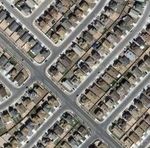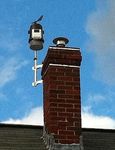Personal Weather Station - Siting
←
→
Page content transcription
If your browser does not render page correctly, please read the page content below
Personal Weather Station - Siting
Proper siting of a personal weather station can be very challenging, especially in an urban or
suburban setting. Generally speaking, avoid obstructions and anything that may cause a
biased reading, such as dark surfaces, or materials that cool slowly, such as concrete.
In most cases, you will have to make compromises, but the closer you are to the standards,
the better. This How-To will provide some examples of “best case” scenarios, some “best
compromise” solutions, and some examples on what NOT to do as well.
Keep in mind that Personal Weather Station accuracy is not within the range acceptable for
“Climate-Quality” data, and typically they will be placed in surroundings that are constantly
changing. Climate-quality data is best collected in areas where sources of potential bias (such
as introduction of surrounding structures and changes in land use) are kept to a minimum.
Ideal Scenario – Standards
Temperature / Humidity Sensor
• Should be placed on a patch of level ground, over a surface representative of the area.
[Avoid rock/concrete and dark-colored surfaces, roofs, or irrigated lawns].
• Should be mounted in a ventilated radiation shield.
• Height between 4’ 1” and 6’ 7” above ground (1.25 – 2.0 m)
• Place sensors at a horizontal distance of 2 times the height of the nearest object (tree,
structure, etc). [Example: 40 feet away from a 20 foot tall tree].
• Keep away from other sources of heat such as chimneys, air vents, air conditioners, etc.
Anemometer
• Ideally mounted at 32.8 feet (10 metres) above ground level.
• Ideally placed at a horizontal distance of 10 times the height of the nearest obstruction.
• When placed on the side of a mast (rather than at the top), the sensor should be placed
on a horizontal boom extending outwards from the mast, at a distance of 3 times the
mast diameter. [So, if mounted on a 2-inch diameter pole, the boom should extend out 6
inches away from the pole].
Rain Gauge
• Ideally mounted at a height of 4 to 6 feet above the ground.
• Ideally located at a horizontal distance of 4 times the height of the nearest obstruction.
• Ensure the gauge is mounted level to the ground, away from any horizontal surface that
can introduce rain-splashing or surrounding snow buildup.
1/8Personal Weather Station - Siting
Reality Check
Welcome to the Desert Southwest, where suburban
houses are built on top of one another, fences are made
of stone or concrete, and back yards are crushed rock or
artificially irrigated turf grass. In some cases, lack of
space, Home Owners’ Association rules, and aesthetics
may make it impossible to ideally place weather
equipment. You can usually find an acceptable
compromise for temperature, humidity, and precipitation,
but the biggest challenge will be anemometer placement.
Station Placement in Rural Areas
The best tip here is “if you’ve got land, use it!” If your home or
business is in a rural area, you are likely to have more space to
keep your instrumentation as far from structures as possible, and
less likely to have landowner covenants or Homeowners
Association rules to abide by. Consider using wireless equipment
to avoid the hassles of running long lengths of wire.
LEFT: This is about as ideal as you can get. Anemometer is at 10m
(32.8’) above ground level (AGL), Temp/Humidity sensor is at 5’
AGL. Surrounding terrain is flat, with a natural, regionally-
representative surface. The anemometer mast has cable stays to
avoid flexing. At 32.8’, cable stays are essential, unless you are
mounting a much larger tower/sturdier structure.
RIGHT: All-in-one units can relieve you of messy wires, but force you
to compromise between the ideal height for temp/humidity/rain
sensors, and ideal height for the anemometer. The best bet is to go
somewhere in-between. This station appears to be about 6-7 feet
off the ground, not ideal for the anemometer, but an acceptable
compromise, especially if the anemometer height can be noted in
metadata. Keep in mind that if you mount an all-in-one station high
up, it will require more work to keep the rain gauge funnel clear of
debris.
2/8Personal Weather Station - Siting
LEFT: The temp/humidity sensor is at an ideal height
over representative ground cover. The rain gauge is at a
good height to avoid dog-watering by the “Weather
Lab.”
However, the anemometer is only at about 6’ AGL.
Mounting a free-standing pole much higher than this
without using cable stays can be difficult, and might not
have been acceptable to the landowner, in which case
this is a good compromise.
The anemometer height should be noted in station
metadata. From a NWS perspective, peak gust
information from this site would still be useful, but we
probably would not want to use wind data for surface
analysis without applying a correction factor, as it would
have a low-biased wind speed against standard mounted
equipment.
Station Placement in Suburban Areas
Smaller yards, nearby structures, variable ground
When mounting any
cover, and HOA rules for aesthetics can make
equipment on a
placing a weather station in residential suburban
structure, be sure to run
areas a challenge.
a ground wire!
The principles remain the same – get the
anemometer as close to 10 metres AGL as possible,
and keep the temp/humidity sensor and rain gauge
as far from obstructions as possible. Stay away
from pavement, rock walls, irrigated lawns, and
swimming pools.
RIGHT: Antenna masts are a great place to mount
an anemometer, but not the temperature sensor.
The anemometers here are both technically “too
low” but the one on the right is at a very good
compromise height. The one on the left would best
be raised a little higher.
Eave cross-mounts can prevent you from having to
drill into your roof.
3/8Personal Weather Station - Siting
LEFT: Chimneys can provide a nice, solid structure
for mounting an extension pole. Chimney mounts
designed for antennas can be purchased in most
home improvement and electronics stores.
While this is likely below 10 metres AGL, this is a
good compromise height that is low-impact (no
holes drilled) and aesthetically not distracting (no
cable stays).
This station (Davis Vantage Pro 2?) uses an
optional wireless transmitter kit for the
anemometer, allowing the anemometer to be
mounted far from the Rain Gauge and
Temp/Humidity sensor suite.
RIGHT: A 4x4 post buried a few feet into the
ground is an excellent mounting option for your
rain gauge and temp/humidity sensor.
Periodically check to ensure that it is plumb and
level, especially if you are in an area prone to
frost-heaving.
If you are concerned about aesthetics, consider
using lumber that is more attractive when
unfinished, such as cedar. It is probably best to
not paint the post a dark color!
4/8Weather Station Siting – Bad Examples!
LEFT: This anemometer is mounted far too
low relative to the roof line. The wind
direction will be heavily influenced by the
peak of the roof, and the wind speed will
be erratic as the roof may enhance or
block the wind, depending on the
direction.
RIGHT: This temperature/humidity sensor
is mounted too close to this structure.
Heat will radiate from the walls, eaves, and
soffit through the day. A pocket of warm
air will likely develop under the eave at
night. This will result in a major warm
bias. The rain gauge may also be blocked
from the right depending on the wind
direction and roof pitch, and heavy
raindrops may splash into the gauge from
the nearby roof.
LEFT: If you do this, you’re just begging for
birds’ nest in your rain gauge funnel!
Wind speed and direction is likely to be erratic
due to turbulence around the tree branches.
Temperature may run a little high during the
day due to radiation off the tree limb.
5/8Weather Station Siting – Bad Examples!
LEFT: Station notes indicated that this is an
inactive chimney, but the temperature and
humidity sensor is still too close to the black
tar shingle roof. The brick also is likely to
radiate heat.
RIGHT: This weather rock is
clearly mounted too low to the
ground, not far enough from
nearby structures, and too close
to pavement.
6/8Weather Station Siting – Good Examples!
LEFT: This sensor suite is far from obstructions,
with the anemometer mounted at about 10 m,
and temp/humidity/rain gauge sensor suite
about 5-6 feet AGL. Hopefully there are cable
stays to prevent wobbling.
7/8Further Detailed Reading
CWOP – Weather Station Siting, Performance, and Data Quality Guide
http://www.srh.noaa.gov/media/epz/mesonet/CWOP-OfficialGuide.pdf
The following are NOT “light” reading…
World Meteorological Organization – Guide to Meteorological Instruments
and Methods of Observation
http://www.srh.noaa.gov/media/epz/mesonet/CWOP-WMO8.pdf
World Meteorological Organization – Initial Guidance to Obtain
Representative Meteorological Observations at Urban Sites
http://www.srh.noaa.gov/media/epz/mesonet/CWOP-WMO1250.pdf
Document last updated 03/11/2012 by Mike Hardiman, NWS El Paso-Santa Teresa. Images
and data contained herein are for informational purposes only and are not intended to imply
endorsement of any particular weather station/manufacturer, software package/developer.
For more information, please contact mike.hardiman@noaa.gov.
8/8You can also read



























































